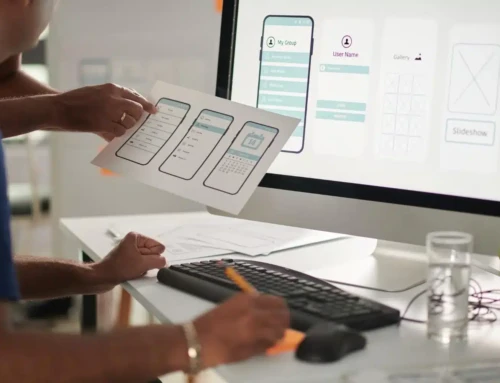In the healthcare industry, technology has become an indispensable tool, revolutionizing patient care and enhancing medical processes. Central to this transformation are intuitive medical apps that prioritize user experience and streamline healthcare interactions. For software development firms seeking to cater to this demand, understanding the principles of user-centered design is paramount. In this article, we explore the significance of user-centered design in developing intuitive medical apps, outlining essential considerations for software developers.
Understanding User-Centered Design in Medical App Development
User-centered design lies at the heart of creating successful medical apps. It entails placing users’ needs and preferences at the forefront of the design process. By employing this approach, software developers can ensure that their applications are intuitive, efficient, and satisfying for end-users. User research, iterative design, and usability testing are key principles that guide the implementation of user-centered design methodologies.
The Process of Developing Intuitive Medical Apps
Conducting User Research
In the initial stages of developing intuitive medical apps, conducting thorough user research is of utmost importance. This involves engaging with the target user base, such as healthcare professionals, patients, and caregivers, to gain insights into their needs, pain points, and expectations. Surveys, interviews, and observations are valuable research methods that help software developers understand the specific challenges and requirements of the intended users. By delving into the users’ perspectives and experiences, developers can uncover valuable insights that inform the design process.
Creating User Personas
User personas play a vital role in the design and development process of intuitive medical apps. A user persona is a fictional representation of a specific user group, capturing their characteristics, behaviors, goals, and motivations. By creating user personas, software developers can develop a deep understanding of the intended users and tailor the app’s features and functionalities to align with their needs. User personas serve as a reference point throughout the design process, enabling developers to make informed decisions that cater to the target users’ preferences.
Wireframing and Prototyping
Wireframing is an essential step in the development of intuitive medical apps. It involves creating basic visual representations or sketches of the app’s interface, focusing on its structure and layout. Wireframes serve as blueprints that outline the placement of various elements, such as buttons, menus, and content sections. They provide a visual framework for developers to discuss and refine the app’s design before moving on to the actual development phase.
Prototyping takes wireframes to the next level by creating interactive and clickable models of the app. Prototypes simulate the user experience, allowing developers to test the flow and usability of the app before investing time and resources in full-scale development. By gathering feedback from stakeholders and potential users, developers can identify potential issues, make improvements, and refine the user interface and interactions.
Usability Testing and Iteration
Usability testing is a crucial step in the development process of intuitive medical apps. It involves observing real users as they interact with the app to evaluate its usability and effectiveness. Through usability testing, software developers can identify any usability issues, navigation challenges, or functional gaps that may hinder the user experience. By collecting feedback from users and incorporating their insights, developers can iterate on the design, making necessary improvements and refinements. This iterative process ensures that the app evolves to meet the needs and expectations of its intended users, leading to a more intuitive and user-friendly final product.
By following a well-defined process that includes user research, persona creation, wireframing, prototyping, and usability testing, software developers can effectively develop intuitive medical apps that prioritize the needs of the users. This user-centered approach not only improves the overall user experience but also enhances patient outcomes, efficiency, and satisfaction in the healthcare sector.
Best Practices for User-Centered Medical App Design:
Prioritizing Clear and Accessible Information
One of the fundamental aspects of user-centered medical app design is ensuring that information is presented in a clear and easily understandable manner. Medical apps often deal with complex concepts and critical health information, making clarity crucial for effective communication. Developers should prioritize concise instructions, use visual aids such as diagrams or illustrations to enhance understanding, and employ plain language to avoid confusion. By presenting information in a user-friendly and accessible way, developers empower users to make informed decisions about their health and enhance their overall engagement with the app.
Streamlining Workflows and Navigation
Intuitive navigation and streamlined workflows are essential for user-centered medical app design. Users should be able to easily navigate through different sections of the app, access relevant features, and perform tasks without encountering unnecessary hurdles. Developers should design logical pathways that align with users’ mental models and expectations. Clear labeling, intuitive icons, and well-organized menus contribute to a seamless user experience. By reducing cognitive load and eliminating unnecessary steps, developers can improve efficiency, minimize user frustration, and enhance overall user satisfaction.
Ensuring Data Security and Privacy
Medical apps handle sensitive patient information, making data security and privacy paramount. Software developers must prioritize robust security measures to protect patient data from unauthorized access, breaches, or misuse. Encryption techniques should be employed to secure data transmission and storage. Access control mechanisms should be implemented to ensure that only authorized individuals can access patient information. Compliance with relevant regulations, such as the Health Insurance Portability and Accountability Act (HIPAA), is crucial to maintaining confidentiality and privacy. By implementing robust data security measures, developers can instill trust and confidence in users, enhancing the overall credibility and adoption of the medical app.
Emphasizing Usability and User Feedback
Usability should be a primary focus in user-centered medical app design. The app’s interface should be intuitive and user-friendly, ensuring that users can easily navigate, interact with features, and accomplish tasks efficiently. Conducting usability testing throughout the development process allows developers to gather valuable feedback from real users. By observing users’ interactions and listening to their suggestions or frustrations, developers can identify areas for improvement and refine the app’s design. Incorporating user feedback in an iterative manner enhances the app’s usability, addresses pain points, and ultimately delivers a more intuitive and satisfying user experience.
By following these best practices, software developers can create user-centered medical apps that prioritize clarity, efficiency, security, and usability. Designing with a focus on accessible information, streamlined workflows, data security, and user feedback ensures that medical apps are intuitive, reliable, and beneficial for both patients and healthcare professionals. Adopting these practices contributes to improved patient outcomes, increased user engagement, and enhanced overall user satisfaction.
Conclusion
Developing intuitive medical apps requires a user-centered design approach. By understanding user needs, creating personas, and incorporating iterative design processes, software developers can deliver user-friendly applications that improve patient outcomes. When seeking a software development firm for enterprise software development, consider Seattle Software Developers, renowned for their expertise in creating intuitive medical apps. Embrace user-centered design to revolutionize healthcare technology and empower both patients and healthcare professionals alike.





